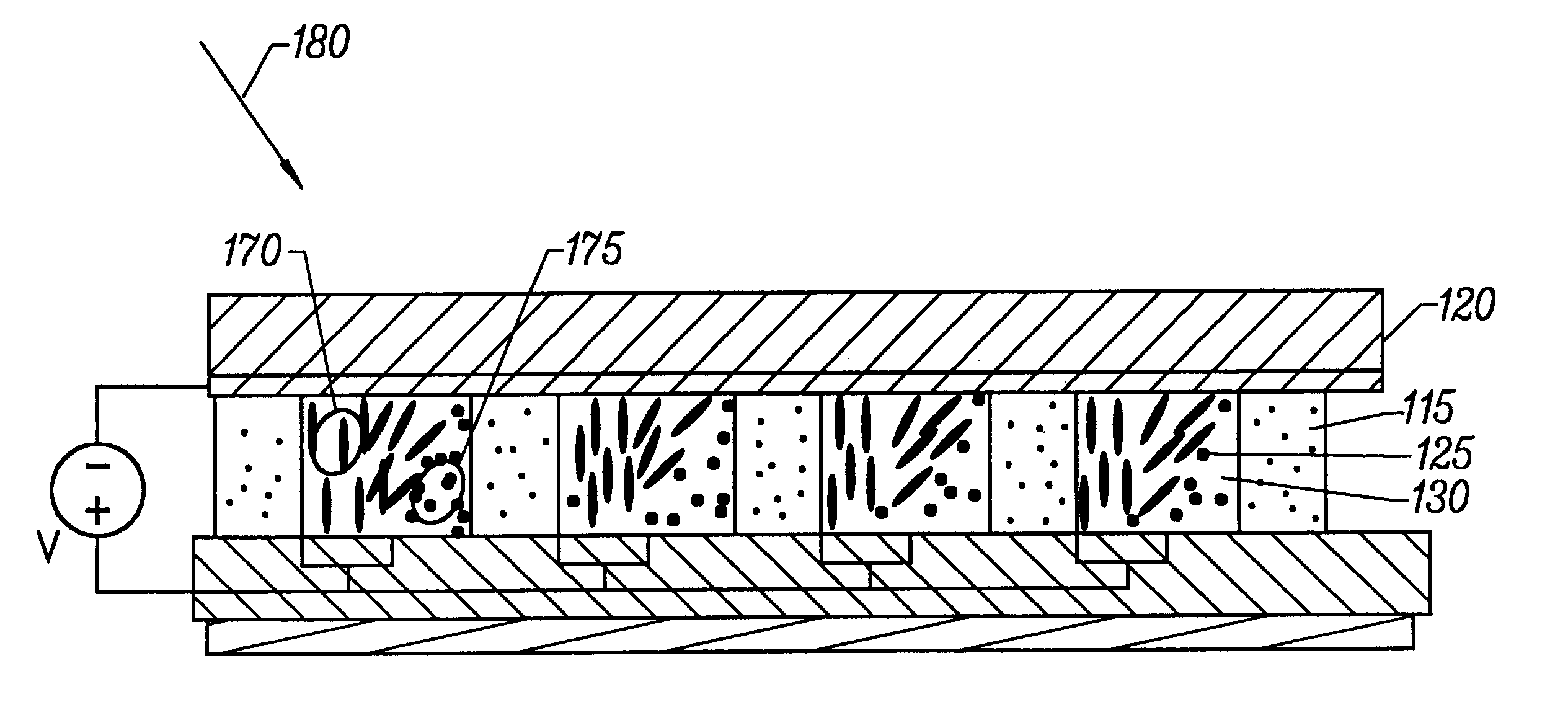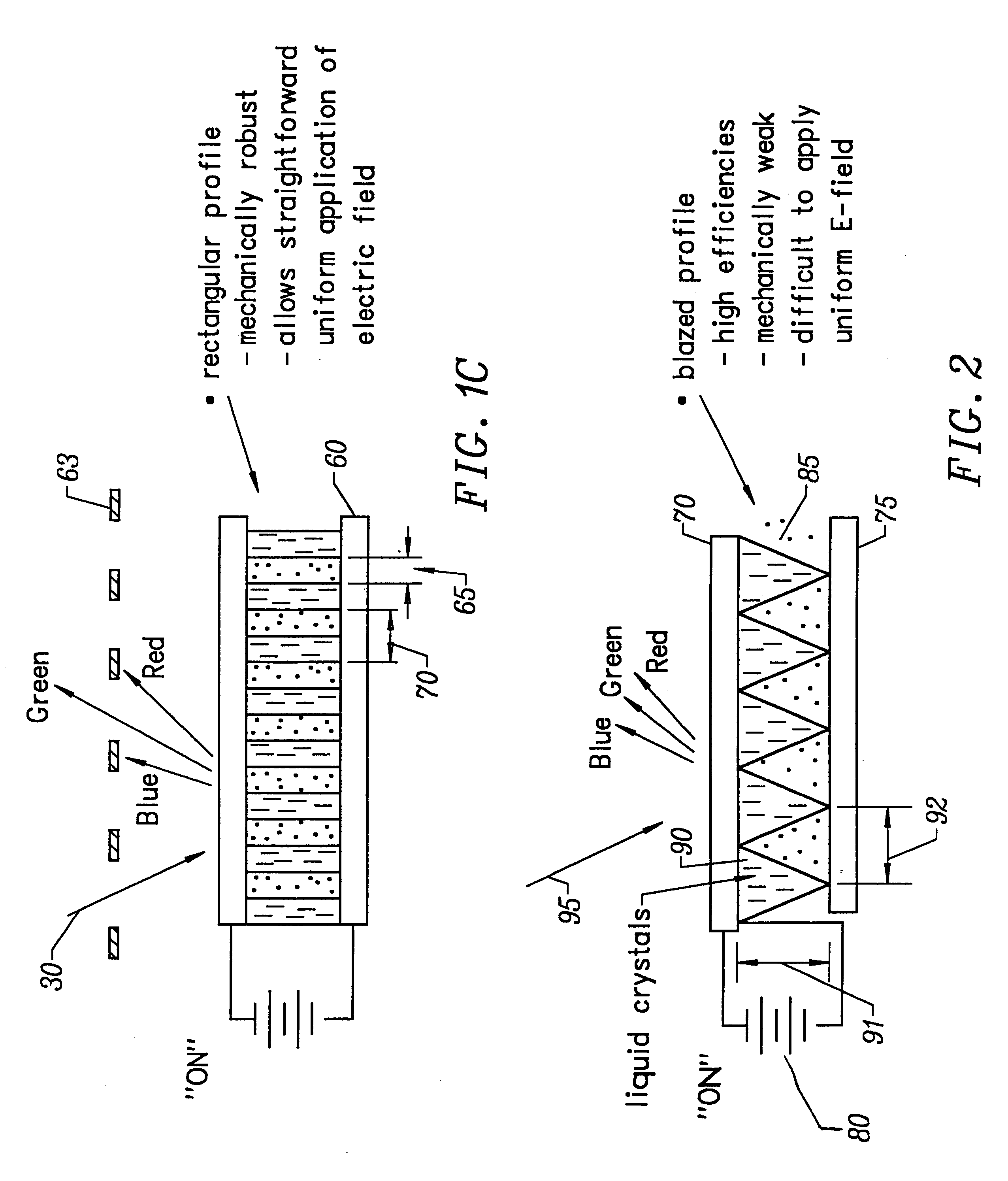Method and apparatus for forming optical gratings
a technology of optical gratings and gratings, applied in the field of methods and apparatus for forming optical gratings, can solve the problems of difficult masking, difficult to balance the diffraction efficiency of the different gratings, and difficulty in fabricating highly efficient (>90%) diffractive structures
- Summary
- Abstract
- Description
- Claims
- Application Information
AI Technical Summary
Benefits of technology
Problems solved by technology
Method used
Image
Examples
Embodiment Construction
I. Virtual Blaze Gratings
A. Sidewall Configurations
1. Off-Center Configurations
FIG. 3a illustrates a cross-section of a structure used in an embodiment of the present invention. FIG. 3a includes a structure 98 including substrate 100, an insulating layer 105, electrodes 110, insulating walls 115, a conductive layer 120, and cavities 125, defining cell regions, bounded by at least the above materials. Cavities 125 include material 130, and conductive layer 120 includes a conductive material 145 disposed on transparent substrate 150.
Substrate 100 is typically used when operating the invention in a reflective mode, i.e. where incident light does not pass through structure 98. In a transmissive mode, i.e. where incident light passes through structure 98, substrate 100 may be eliminated. Substrate 100 typically comprises a semiconductor substrate such as silicon, although other semiconductor substrates and other substrate materials are within alternative embodiments of the present invent...
PUM
 Login to View More
Login to View More Abstract
Description
Claims
Application Information
 Login to View More
Login to View More - R&D
- Intellectual Property
- Life Sciences
- Materials
- Tech Scout
- Unparalleled Data Quality
- Higher Quality Content
- 60% Fewer Hallucinations
Browse by: Latest US Patents, China's latest patents, Technical Efficacy Thesaurus, Application Domain, Technology Topic, Popular Technical Reports.
© 2025 PatSnap. All rights reserved.Legal|Privacy policy|Modern Slavery Act Transparency Statement|Sitemap|About US| Contact US: help@patsnap.com



